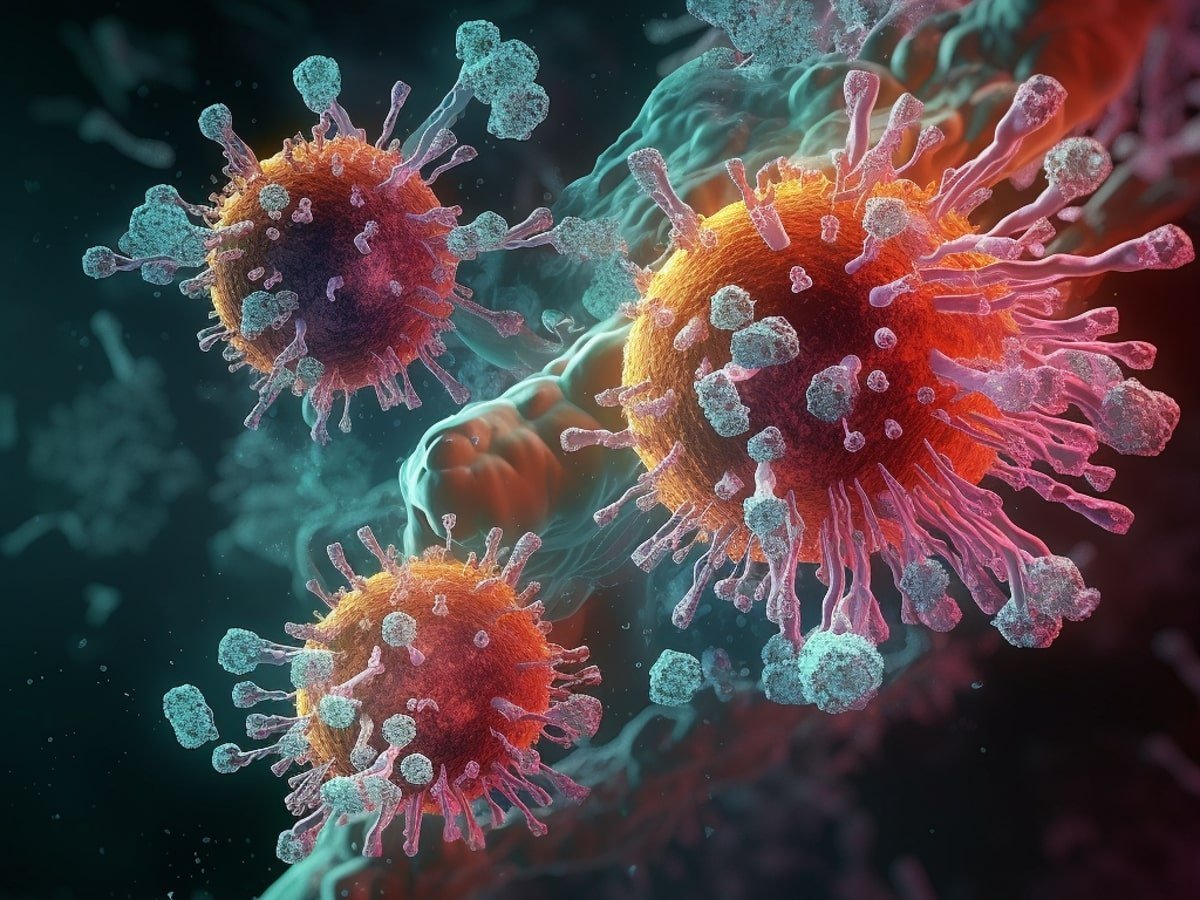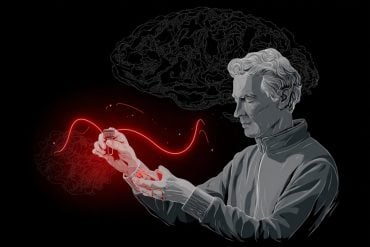Summary: A recent study found that secondary bacterial pneumonia, rather than the much-discussed “cytokine storm,” is a significant factor in COVID-19-related fatalities. Almost half of the patients who required mechanical ventilation support were affected by this secondary bacterial infection.
By applying machine learning to analyze medical records, the researchers found that those who recovered from secondary pneumonia were more likely to survive, whereas unresolved cases increased mortality risk.
The study, which challenges the cytokine storm theory, emphasizes the importance of preventing and aggressively treating secondary bacterial pneumonia in critically ill patients.
Key Facts:
- Almost half of the patients with COVID-19 who required mechanical ventilation support developed secondary bacterial pneumonia, which contributed significantly to fatalities.
- Patients who recovered from secondary bacterial pneumonia had a higher chance of survival, while those with unresolved cases were more likely to die.
- The study challenges the widely-held belief that a “cytokine storm” causes death in COVID-19 patients, emphasizing the importance of prevention and aggressive treatment of secondary bacterial pneumonia in critically ill patients.
Source: Northwestern University
Secondary bacterial infection of the lung (pneumonia) was extremely common in patients with COVID-19, affecting almost half the patients who required support from mechanical ventilation.
By applying machine learning to medical record data, scientists at Northwestern University Feinberg School of Medicine found that secondary bacterial pneumonia that does not resolve was a key driver of death in patients with COVID-19. It may even exceed death rates from the viral infection itself.
The scientists also found evidence that COVID-19 does not cause a “cytokine storm,” so often believed to cause death.
The study was recently published in the Journal of Clinical Investigation.
“Our study highlights the importance of preventing, looking for and aggressively treating secondary bacterial pneumonia in critically ill patients with severe pneumonia, including those with COVID-19,” said senior author Dr. Benjamin Singer, an associate professor of medicine at Northwestern University Feinberg School of Medicine and a Northwestern Medicine pulmonary and critical care physician.
The investigators found nearly half of patients with COVID-19 develop a secondary ventilator-associated bacterial pneumonia.
“Those who were cured of their secondary pneumonia were likely to live, while those whose pneumonia did not resolve were more likely to die,” Singer said.
“Our data suggested that the mortality related to the virus itself is relatively low, but other things that happen during the ICU stay, like secondary bacterial pneumonia, offset that.”
The study findings also negate the cytokine storm theory, said Singer, also the Lawrence Hicks Professor of Pulmonary Medicine at Feinberg.
“The term ‘cytokine storm’ means an overwhelming inflammation that drives organ failure in your lungs, your kidneys, your brain and other organs,” Singer said.
“If that were true, if cytokine storm were underlying the long length of stay we see in patients with COVID-19, we would expect to see frequent transitions to states that are characterized by multi-organ failure. That’s not what we saw.”
The study analyzed 585 patients in the intensive care unit (ICU) at Northwestern Memorial Hospital with severe pneumonia and respiratory failure, 190 of whom had COVID-19.
The scientists developed a new machine learning approach called CarpeDiem, which groups similar ICU patient-days into clinical states based on electronic health record data.
This novel approach, which is based on the concept of daily rounds by the ICU team, allowed them to ask how complications like bacterial pneumonia impacted the course of illness.
These patients or their surrogates consented to enroll in the Successful Clinical Response to Pneumonia Therapy (SCRIPT) study, an observational trial to identify new biomarkers and therapies for patients with severe pneumonia.
As part of SCRIPT, an expert panel of ICU physicians used state-of-the-art analysis of lung samples collected as part of clinical care to diagnose and adjudicate the outcomes of secondary pneumonia events.
“The application of machine learning and artificial intelligence to clinical data can be used to develop better ways to treat diseases like COVID-19 and to assist ICU physicians managing these patients,” said study co-first author Dr. Catherine Gao, an instructor in pulmonary and critical care medicine at Feinberg and a Northwestern Medicine physician.
“The importance of bacterial superinfection of the lung as a contributor to death in patients with COVID-19 has been underappreciated because most centers have not looked for it or only look at outcomes in terms of presence or absence of bacterial superinfection, not whether treatment is successful or not,” said study co-author Dr. Richard Wunderink, who leads the Successful Clinical Response in Pneumonia Therapy Systems Biology Center at Northwestern.
The next step in the research will be to use molecular data from the study samples and integrate it with machine learning approaches to understand why some patients go on to be cured of pneumonia and some don’t.
Investigators also want to expand the technique to larger datasets and use the model to make predictions that can be brought back to the bedside to improve the care of critically ill patients.
Other Northwestern authors on the paper include Nikolay S. Markov, Thomas Stoeger, Anna E. Pawlowski,Mengjia Kang, Prasanth Nannapaneni, Rogan A. Grant, Chiagozie Pickens, James M. Walter, Jacqueline M. Kruser, Luke V. Rasmussen, Daniel Schneider, Justin Starren, Helen K. Donnelly, Alvaro Donayre, Yuan Luo, Scott Budinger and Alexander Misharin.
Funding: The study was supported by the Simpson Querrey Lung Institute for Translational Sciences and grant U19AI135964 from the National Institute of Allergy and Infectious Diseases of the National Institutes of Health.
About this artificial intelligence research news
Author: Marla Paul
Source: Northwestern University
Contact: Marla Paul – Northwestern University
Image: The image is credited to Neuroscience News
Original Research: Open access.
“Machine learning links unresolving secondary pneumonia to mortality in patients with severe pneumonia, including COVID-19” by Benjamin Singer et al. Journal of Clinical Investigation
Abstract
Machine learning links unresolving secondary pneumonia to mortality in patients with severe pneumonia, including COVID-19
BACKGROUND. Despite guidelines promoting the prevention and aggressive treatment of ventilator-associated pneumonia (VAP), the importance of VAP as a driver of outcomes in mechanically ventilated patients, including patients with severe COVID-19, remains unclear. We aimed to determine the contribution of unsuccessful treatment of VAP to mortality in patients with severe pneumonia.
METHODS. We performed a single-center prospective cohort study of 585 mechanically ventilated patients with severe pneumonia and respiratory failure, 190 of whom had COVID-19, who underwent at least one bronchoalveolar lavage. A panel of ICU physicians adjudicated pneumonia episodes and endpoints based on clinical and microbiologic data. Given the relatively long ICU length of stay among patients with COVID-19, we developed a machine learning approach called CarpeDiem, which groups similar ICU patient-days into clinical states based on electronic health record data.
RESULTS.CarpeDiem revealed that the long ICU length of stay among patients with COVID-19 is attributable to long stays in clinical states characterized primarily by respiratory failure. While VAP was not associated with mortality overall, mortality was higher in patients with one episode of unsuccessfully treated VAP compared with successfully treated VAP (76.4% versus 17.6%, P < 0.001). In all patients, including those with COVID-19, CarpeDiem demonstrated that unresolving VAP was associated with transitions to clinical states associated with higher mortality.
CONCLUSIONS. Unsuccessful treatment of VAP is associated with greater mortality. The relatively long length of stay among patients with COVID-19 is primarily due to prolonged respiratory failure, placing them at higher risk of VAP.
FUNDING. U19AI135964








